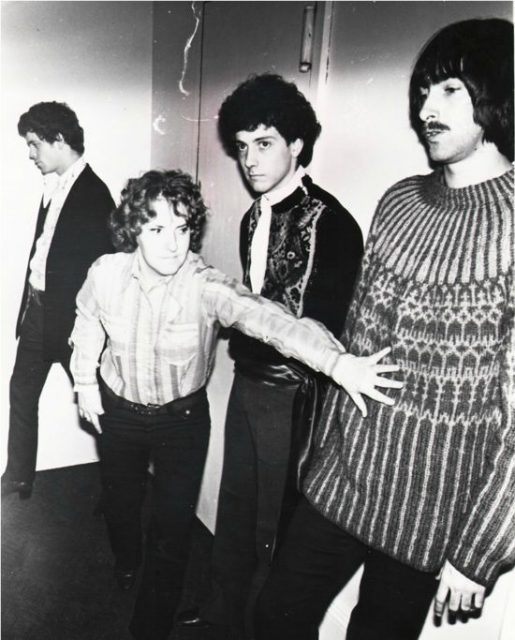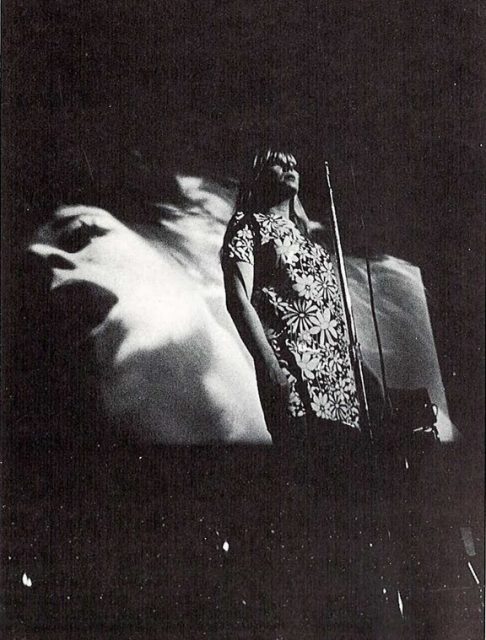When Andy Warhol met Lou Reed in 1966, the two forged a symbiotic if wary relationship. Each possessed something the other wanted. The enigmatic white-haired painter had established himself as the reigning king of the Pop Art scene with his Campbell Soup Cans and Marilyn Monroe silk screens.
But he wanted to expand his Factory empire into rock & roll, and recognized the gritty guitarist’s authenticity. For his part, Reed craved a piece of Warhol’s fame. Reed thought Warhol could rescue him from dismal gigs playing manufactured pop and R&B covers, and he was right.
Reed, a couple of years out of college at Syracuse, was working at the time as a songwriter in a “hit factory” that churned out inane pop songs. Emotionally troubled, Reed disliked and even mocked the work but did it for the money. On the side, he formed an avant-garde band with a group of friends. They appropriated the name Velvet Underground from a subversive book of the same name, and because “underground” was a popular term at the time, according to Anthony DeCurtis, author of the new biography Lou Reed: A Life.
The Velvet Underground’s now legendary debut took place in a high school in suburban New Jersey on December 11, 1965. Al Aronowitz, an early rock and roll journalist, promoter, and manager, hired Reed and his pals to open for a local folk band called the Myddle Class, paying the Velvet Underground $75, a handsome sum for starving musicians of the day. Tickets cost $2.50; the show sold out. The Velvet Underground played just three songs, but managed to horrify half the crowd.

“It’s hard to really explain how much [The Velvet Underground] stood out in those days,” Rob Norris, a bassist who attended the show and who would later join a future edition of the band, told NJArts.com in 2015. “Nobody looked like that. The Beatles had neat little haircuts. Cale had shoulder-length stuff, with silver jewelry on. They all had shades. They’re all in black. Evil had arrived.”
“It pretty much caused a riot,” said Norris. “A lot of parents were just grabbing their kids and heading for the exits.”
Aronowitz found a better venue for the Velvet Underground: Café Bizarre, in Greenwich Village, where they played R&B covers along with a few original songs six nights a week. The gig quickly exhausted them, but it did have one important future-defining upside: it’s where Andy Warhol discovered them.
Wanting to add rock & roll to his Factory’s repertoire, Warhol offered to act as the Velvet Underground’s manager—not knowing what that normally entailed didn’t deter him. To Warhol the band didn’t seem glamorous enough, and so he installed the German model Nico as a vocalist, and rechristened the band the Velvet Underground With Nico. (The addition of Nico annoyed Lou Reed, but not so much that he resisted an affair with her.) Warhol added the band to his “happenings,” called Exploding Plastic Inevitable, a drug-fueled mashup of music, movies, lights, and dance.

When Warhol decided his fledgling band should record an album in the spring of 1966, they went to crumbling run-down studios at 254 West 54th Street, which would eventually become the famous discotheque Studio 54. For four days, they recorded the songs that would become The Velvet Underground & Nico. Warhol dropped in periodically to visit, but didn’t do much more than gaze “with rapt fascination at all the blinking lights,” Reed said, according to a 2017 Rolling Stone article. “Of course he didn’t know anything about record production. He just sat there and said, ‘Oooh that’s fantastic.’ ” That suited Reed just fine.
“The advantage of having Andy Warhol as a producer was that, because it was Andy Warhol, [engineers] would leave everything in its pure state,” Reed wrote, according to Rolling Stone. “They’d say, ‘Is that all right, Mr. Warhol?’ And he’d say, ‘Oh … yeah!’ So right at the very beginning we experienced what it was like to be in the studio and record things our way and have essentially total freedom.”

Warhol got credit as the producer of the debut album, but the cover art was undeniably his métier, where he could make his biggest and most lasting impact. Verve, the record company that distributed the album, was all too thrilled to have Warhol’s participation generate publicity. The album made the Top 10 Best Album Covers of All Time, according to Rolling Stone’s Readers Poll. It was pure high-concept Warhol: against a white background, a silk screen banana with a sticker that said “peel slowly and see,” revealing a pink banana underneath. The only other words on the front cover were those of his name: Andy Warhol. At the time, critics were not impressed with the album; sales were dismal, production ceased.
Today the album is considered a rock & roll classic. Copies of the original Warhol cover with the “peel and see” sticker are so rare they command upward of $4,000 and so worshiped that one collector in New York City has amassed 800 copies. When NPR asked him earlier this hear if he’d ever been tempted to “peel and see” underneath one of the original Pop Art bananas, the aghast collector shuddered and replied “NEVER!”
